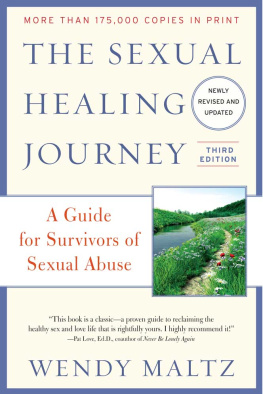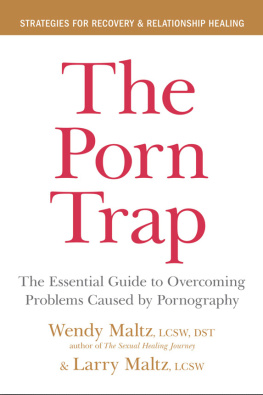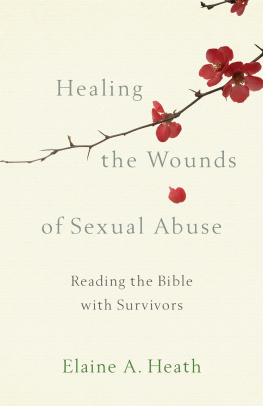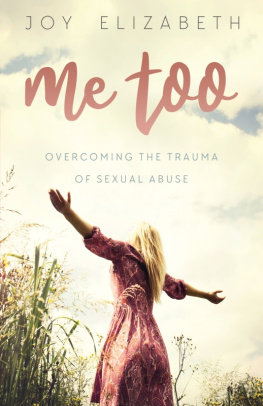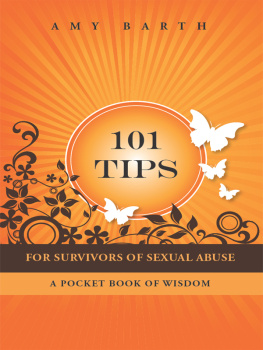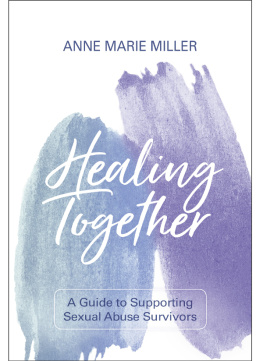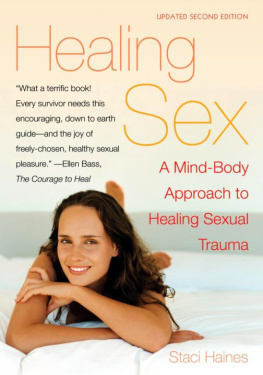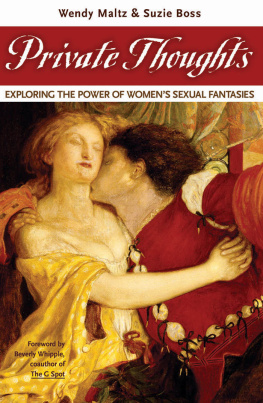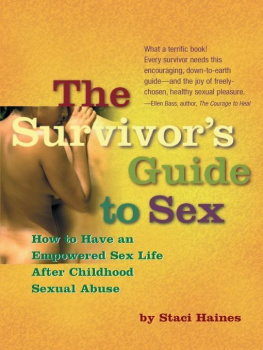
The Sexual Healing Journey
A guide for Survivors of Sexual Abuse
T HIRD E DITION
Wendy Maltz

To Larry,
in celebration of the sweet love we share
Contents
I pedal my sturdy silver bike along the banks of the Willamette River. White, puffy clouds roll northeast, shifting now and then to reveal a blue sky and warm sun. Its spring, and the bright green riverfront surges with new life. It was on a bike ride to this river back in 1989 that I decided to write The Sexual Healing Journey . Today, I celebrate the books more than twenty years in print and reflect on its history and continued value as a healing resource for survivors.
I remember feeling compelled to write this book. It was as though I had discovered a new plant with medicinal properties in my own backyard and just had to share it. In my clinical practice, through academic research, and in my personal life, I was learning a tremendous amount about sexual healing. I drew on these discoveries to help many survivors begin to heal and reclaim their sexuality. Yet, I knew that many more continued to suffer in silence. Few resources for healing existed at that time. And the ones that were available were limited in content and tone. I saw the need for an information-packed, compassionate resource that would empower and assist a wide range of survivors and their intimate partners. I was challenged by the dilemma facing many survivors: wanting to enjoy sexual intimacy but having difficulty addressing sexual issues directly.
When I decided to write The Sexual Healing Journey, there were no resources that offered sex therapy techniques specifically designed for survivors. People with problems related to incest, rape, and sexual molestation were encouraged to use traditional sex therapy approaches and techniques. These exercises were prescribed and prescripted. They were insensitive to the special needs of people with sexual trauma histories. Many survivors found them unappealing, and in some instances, retraumatizing. As one survivor told me, They were too much, too soon, and too sexual!
Thats why I began to develop new healing approaches. My techniques teach basic skills first: rudimentary self-awareness, communication, and touching; the need to initiate and control sexual contact; and the need to go slow and build bridges from one experience to another.
My goal became to create a comprehensive healing guide beneficial to all survivors, regardless of how or when they were abused, the amount of sexual abuse recovery work they have already done, or their present lifestyles and sexual orientations. To extend the range of this book beyond what I had learned in my clinical practice as a therapist and in my early research, I interviewed survivors who had worked on sexual healing with other therapists. To reach even more people, I designed a lengthy questionnaire that I administered to more than 140 survivors, partners of survivors, and clinicians specializing in sexual healing.
I recall it being a very busy and exciting time as I gathered and organized the information for this book. It was a great opportunity for meas a woman who has recovered from sexual abuse herself, and as a therapist who specializes in treating sexual problems. I learned more about effective healing techniques. And as the writing progressed, it was exhilarating to experience the book taking on a life of its own.
I was blessed with the supportive input and assistance of many other peoplecolleagues, friends, family, and survivors. They became actively involved and kept reminding me how important the book would be to others. A male survivor wrote on the back of his questionnaire, Id be pleased if my story can help just one person, although I wish this kind of book were not necessary. Another survivor wrote, I pray that people can realize abuse may have caused their sexual problems, and seek and get help. Their words kept the project flowing and kept me cognizant of how vital a role sexual healing plays in recovery from abuse.
While I brought professional wisdom to the project, the book was also very important to me on a personal level. I am what I call a patchwork survivorone who has experienced different kinds of sexual abuse at different times in his or her life. When I was a little girl, I was touched inappropriately by an uncle who acted in a sexually seductive and flirtatious manner toward me. These experiences made me anxious about my own sexual energy and harmed my ability to select genuinely caring partners in my early dating years.
When I was a junior at the University of Colorado, I was assaulted one afternoon while walking on a heavily wooded campus path. A man sprang out from behind some bushes with his pants undone, threw me up against a wall, fondled me, and tried to rape me. I defended myself with the book I was carrying: a treatise on Mahatma Gandhis methods of nonviolent protest. For a long time, I joked about how funny it was that I hit him with such a book, preferring not to remember the terror and powerlessness I had felt then. It wasnt until he heard other people approaching on the path that he let go of me and ran away.
Later, in graduate school, I went out with a law student I barely knew. He invited me to his apartment to listen to music. After a few kisses, he suddenly changed. A faraway look came over him, and he seemed to become another person. He grabbed me, held me down, and raped me. I felt used, humiliated, and mad at myself. I never reported the event. It wasnt until years later when I read books about date rape that I admitted I had been a victim. I had to learn to call it rape and to release myself from feeling responsible for what had happened to me.
This patchwork of experiences, along with years of study and work as a sex therapist, has helped me understand the challenge of sexual healing. I know how hard it can be to overcome denial and feelings of responsibility. I know how long it can take to stop old patterns of behavior that continually re-create the abuse. I know how slowly one has to go to relearn touch and sexual responsiveness in a new way, free of the memories of abuse. And I know how important it is to respect and love oneself, embracing a new concept of what it means to be a sexual person.
One of the things that I enjoyed most about writing this book was the opportunity it gave me to share my hard-earned insights about sexual healing with others. Its important to me to break the silence and reduce shame about important sexual issues. Too many people suffer unnecessarilystuck in self-hatred, ignorance, and dissatisfactionbecause they are denied accurate information about sex. As a trailblazer, The Sexual Healing Journey gives survivors and partners a crucial message: You are not alone. You can safely learn from the healing experiences of others who have gone before you. You can enjoy a deeply rewarding sex life of your own invention.
The book also prompted me to go further in my own sexual healing. More memories of childhood abuse surfaced. I confronted my uncle about the covert type of incest I experienced as a child. He was furious and denied the abuse at first. A year later, after doing some counseling work of his own, he visited me in Eugene, Oregon, to work on family reconciliation. We met, and I told him what I remembered and how his actions had affected my life.
My uncle listened, shared more information, took responsibility for his actions, and offered a sincere apology. In addition, he told me about things that had happened to him in the family that led him to develop poor boundaries with sexual talk and behavior. It was heart-wrenching to realize how much the past abuse had prevented an active, healthy uncle-niece relationship for many years. We both cried. Afterward, I felt like I shed layers of unnecessary sexual shame I hadnt even been aware I had been carrying. I also gained a greater respect for the courage it takes for someone who perpetrated sexual abuse in the past to step forward and be accountable.
Next page
